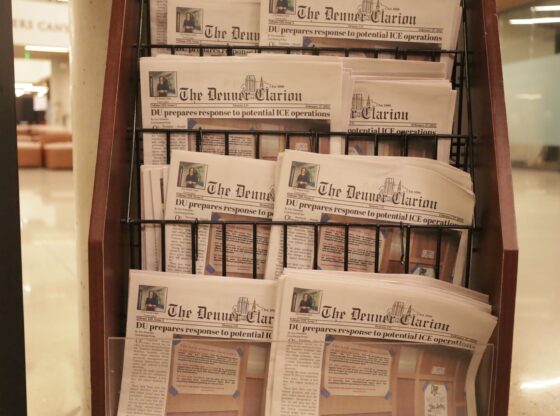On Feb. 28, the Supreme Court began hearing oral arguments in two lawsuits against the Biden-Harris Administration Student Debt Relief Plan. The first lawsuit, Biden v. Nebraska, was brought to the court by six Republican-controlled states including Missouri, Nebraska, Iowa, Arkansas, Kansas and South Carolina. The second lawsuit, U.S. Department of Education v. Brown, was raised by two private citizens.
In both lawsuits, the primary questions posed to the Supreme Court focus on the constitutional requirement for “standing” or “injury” from the policy, and whether the Department of Education has legal authority to forgive student debt.
The Biden Administration announced the Student Debt Relief Plan in August 2022. The initiative would cancel up to $20,000 in debt for Pell Grant recipient loan borrowers and up to $10,000 in debt for non-Pell recipients. All eligible borrowers must earn below $125,000 for a single person or $250,000 for a household.
According to the Biden Administration, 16 million borrowers have already been approved for loan forgiveness, with 90% of them earning less than $75,000. Nearly 43 million Americans are eligible for such benefits which will cost the federal government approximately $400 billion over 10 years.
In a statement released by the White House, 21% of borrowers eligible for the program are 25 years and under, and 44% are between 26 and 39 years old. The relief program also works to narrow the racial wealth gap as Black borrowers are more likely to borrow and take out larger loans.
The plan, argued by the Department of Education legal teams, is much more than a loan forgiveness initiative. It also outlines other key issues including: forgiving loan balances after 10 years of payments, rather than the current 20 years; raising the amount of income that is considered non-discretionary; and requiring borrowers to pay no more than 5% of their discretionary income per month on undergraduate loans, down from 10% currently.
Biden defended the plan as a constitutional measure based on the HEROES Act passed by Congress after the 9/11 attacks. The law ensures student loan borrowers are not economically harbored by a national emergency, granting the Department of Education the authority to do as necessary to protect individuals in such situations. This law was enacted by both Trump and Biden during the pandemic to pause student debt payments without penalties for borrowers.
For the lawsuits, both plaintiffs need to prove the Biden administration has overstepped the bounds of the HEROES Act and has harmed citizens by pushing for this relief program, a situation termed “standing.” Legal experts agree this obligation will require the plaintiffs to creatively argue their case to the court.
While the Supreme Court is unlikely to release its decision on the plan until June, legal experts worry the intense political atmosphere encompassing the relief program will threaten the legitimacy of court-executive separation of powers.
Most applicable to the everyday person, however, is the real worry of loan repayment deadlines. The end of the COVID-19 national public health emergency on May 11 means that millions of borrowers will have to resume their student loan repayments either on June 30, or 60 days after the Supreme Court decision, whichever occurs first.
At the University of Denver, approximately 87% of undergraduate students receive some form of financial aid, including both institutional merit aid and federal subsidized or unsubsidized loans.
Only 18% of financial aid received by undergraduates is classified as federal loan or work-study, whereas 82% accounts for scholarships, grants and other merit-based aid.
For DU students, these legal proceedings will impact those who currently have student loans offered in their financial aid package through the federal government. The Biden-Harris Plan is no longer taking applications given court orders to block the program, therefore only students who already applied to the program will be considered for debt relief at this time.
At DU, those who meet federal loan eligibility requirements can take out up to $12,500 as an independent student and $7,500 as a dependent student. Depending on post-graduate earnings, most students and alumni who have these loans could qualify for relief.











